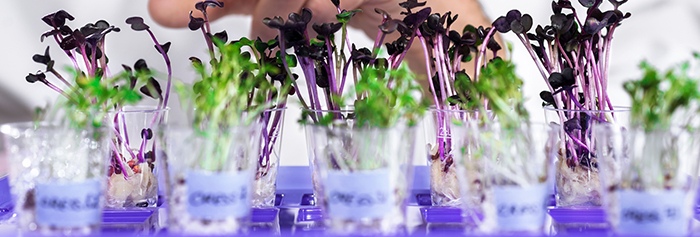Food and Drug Safety Assessment

New Methods in Food and Drug Safety Assessment
How can we achieve optimum near-term impact on regulatory decision-making? This vital question sums up the discussions at the Global Summit on Regulatory Science (GSRS17) Conference held in Brasilia in August. Under the theme “Emerging Technologies for Food and Drug Safety”, the conference devoted its first two days to exploring the latest technological developments and initiatives from numerous perspectives. On the final morning, these perspectives were brought together in an attempt to answer the question.
The GSRS speakers considered the following emerging technologies to hold particular promise for near-term impact:
- The emerging application of cell biology (e.g. induced pluripotent stem cells, iPSCs) to enable a much greater range of cell biology that can be probed in vitro;
- Reprogramming techniques (e.g., CRISPR) to introduce highly specific biological changes in vitro and in vivo and to study their effects;
- The increased use of 3D culture systems and cell-on-a-chip systems to strengthen the physiological context of evidence generated;
- Technology (e.g., High Content Imaging and Omics) that increases big-data driven evidence;
- Improved in silico modelling (e.g., in toxicokinetics and its application to toxicology on dose-related predictions such as extrapolations of mechanistic data to predict points of departure).
 The emergence of so many new methods holds promise for new scientific understanding. But the new methods also present significant challenges to the regulatory community on using the new evidence reliably.
The emergence of so many new methods holds promise for new scientific understanding. But the new methods also present significant challenges to the regulatory community on using the new evidence reliably.
The assessment and acceptance of new protocols and practices and their credibility, fit-for-purpose and qualification will require new frameworks for evaluating and integrating diverse sources of evidence to support regulatory decisions.
Knowledge Frameworks based on Adverse Outcome Pathways appear to provide a promising way forward to anchor mechanistic data against a background of currently accepted knowledge (e.g. initiating or intermediate key events along the path to outcomes).
In the area of food safety, the GSRS speakers noted the willingness of regulators to use data from new technologies once they are mature enough. However, acceptance is limited by regulatory boundaries on products. A better alternative in the near-term could be the use of user-supplied supplementary data for the generic assessment of contaminants. For example, in silico data on flavours can be used for prioritisation decisions with regard to genotoxicity and carcinogenicity concerns. Use of Whole Genome Sequencing in monitoring pathogens and outbreaks also looks promising, but there are numerous current uncertainties on how to interpret the results. (The GSRS Working Group on bioinformatics plans to address this topic with case study work in 2018).
One example provided of new emerging guidance affecting drug assessment is the revision of the ICH S5 guideline on the detection of toxicity to reproduction for human pharmaceuticals. Another example was the CIPA initiative whose ongoing validation program aims to establish a new paradigm for assessment of the clinical potential of an important abnormal heart rhythm side effect (Torsades de pointes) based on a suite of mechanistically driven in vitro assays coupled with in silico modelling of cellular cardiac electrophysiological activity. Applications of such methods early in the development process can get new, promising drugs into the clinic faster.
One collective message from the discussions was the need for collaboration across the regulatory science community and with other scientific communities. It is essential to advance our social frameworks so that best practices move quickly from research to practice and decision-making. In this way, innovative products will be moved more quickly to the market while also better protecting people and the environment.
| Dr Barry Hardy is a Managing Director (CEO) at Douglas Connect |
All opinions expressed in this article are those of the author alone.


